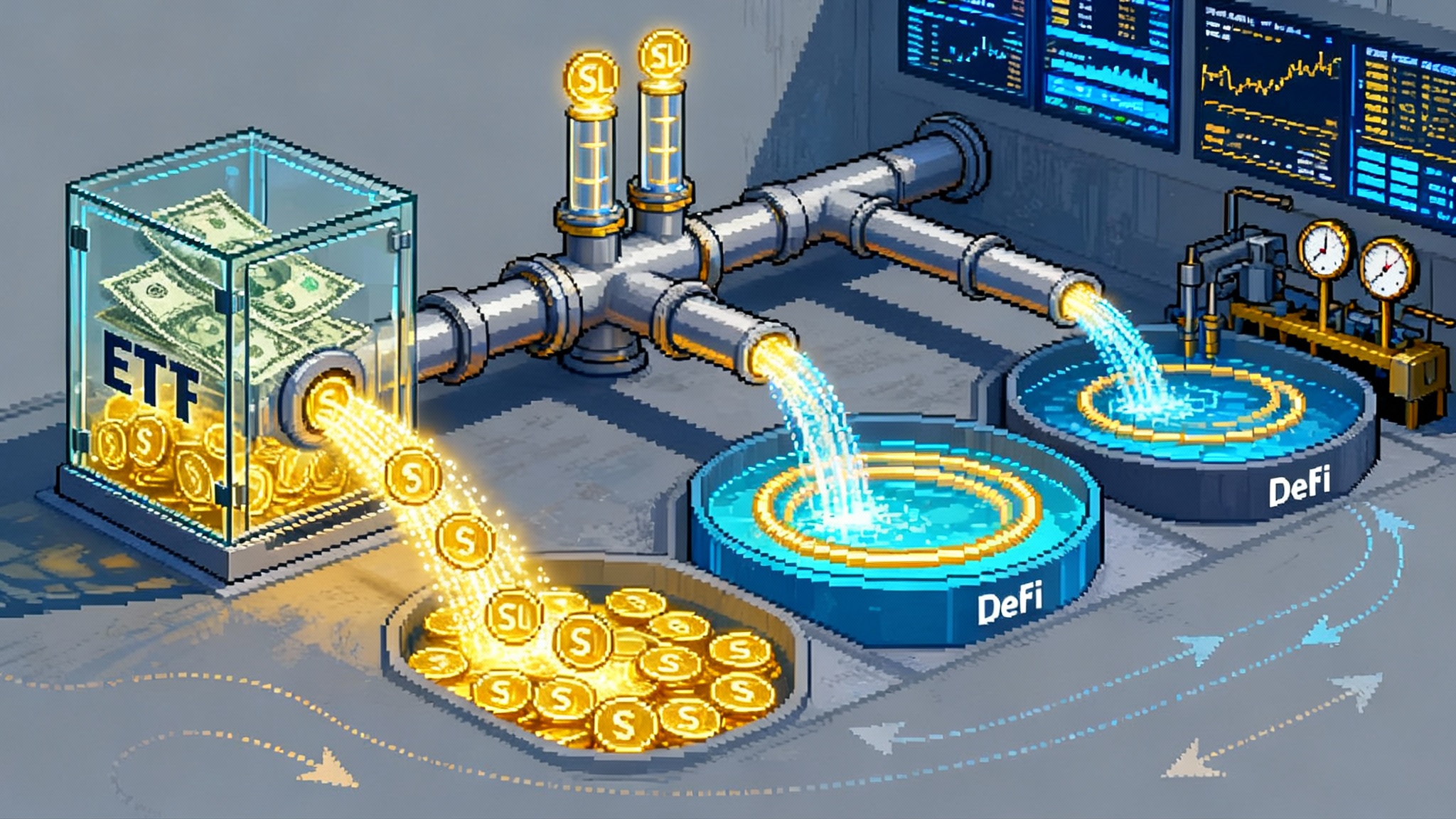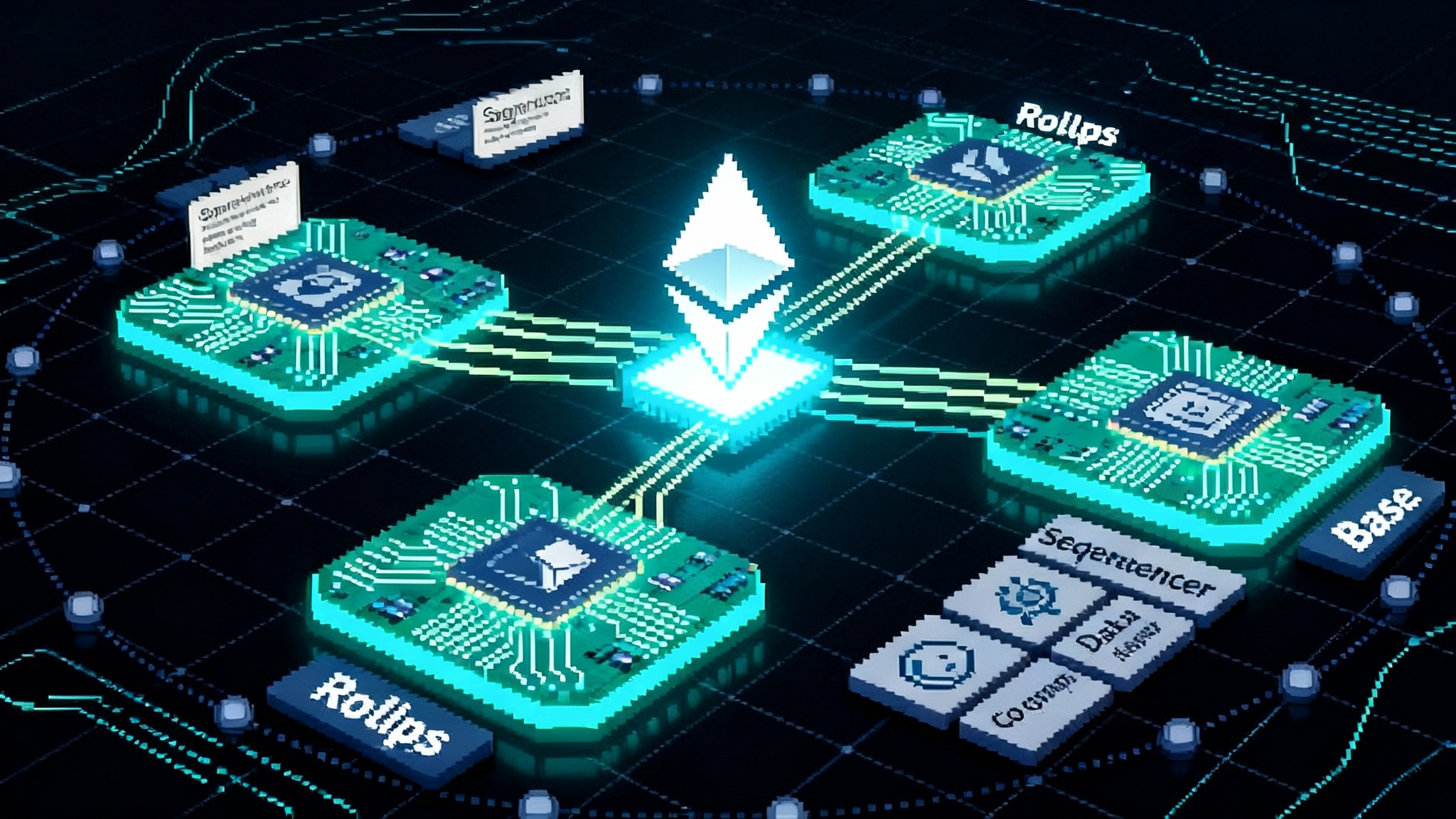Stocks That Never Sleep: Tokenized Equities Hit Prime Time
In October 2025, tokenized stocks moved from pilot to product. Here is how 24/7 trading actually works, what rights you really get, and the pitfalls to check before you buy.

The week equities learned to ignore the closing bell
In the first days of October 2025, a once fringe idea broke into the mainstream conversation: stocks represented as tokens on public blockchains. Major retail platforms pushed tokenized shares into their European apps, crypto exchanges widened access to tokenized United States equities for non United States customers, and American firms sought a path to offer the same at home. At the same time, regulators and exchanges warned that many of these instruments look and behave differently from the stocks investors think they know. It was a market structure story disguised as a product launch, and it sets the stage for a very different twelve months ahead. See the clearest snapshot of that tension in this timely report: regulators sound alarms on tokenized stocks.
If you only remember one thing, remember this: tokenized stocks are not a single thing. Some are synthetic price trackers. Some are fully collateralized wrappers around real shares held in custody. A few are being designed to become the shares themselves once market plumbing catches up. Which one you are holding determines whether you receive dividends, whether you can vote, how you settle, and what happens when something breaks.
What just launched, and why it matters
Between June and September, large consumer names in crypto rolled out tokenized equities in non United States markets, while big United States brokerages began piloting similar features in Europe. The pitch is simple and powerful: 24 hour access, near instant settlement, and the ability to move a stock token between wallets the way you move stablecoins. That portability unlocks new uses, such as pledging a basket of on chain equities as collateral for a loan or routing an order through a decentralized exchange that never closes.
The scale is still small compared with traditional volumes, but the direction of travel is clear. Retail platforms want to keep customers in one app across crypto and stocks. Crypto exchanges want to diversify into traditional assets with blockchain as the common rail. Post trade giants want to upgrade the pipes that all of this will eventually run through.
Two designs, two very different risk profiles
Tokenized equity products today follow two primary designs. Think of them as two different bridges that let price and cash flow cross from the traditional world to a blockchain.
1) Synthetic tokens: a price mirror without the share
A synthetic token is a crypto instrument that tracks a stock’s price but does not represent direct ownership of that stock. The issuer may hedge exposure with futures, swaps, or baskets, or they may accept directional risk. Some synthetics embed a funding mechanism to simulate dividends. Others simply reflect price.
How it works in practice:
- The token’s price follows the reference stock using oracles and market makers.
- The issuer might be a centralized exchange or a decentralized protocol.
- Investors typically do not receive official corporate actions. Simulated dividends, if any, are discretionary and depend on the issuer’s policy.
- There is counterparty risk if the issuer’s hedge fails or if a protocol breaks.
The upside is ease of distribution and 24 hour liquidity. The tradeoff is legal distance from the underlying security and a reliance on the issuer’s balance sheet or smart contracts. In plain English, you are buying a promise to track, not a claim on shares.
2) Fully collateralized tokens: a wrapper around actual shares
A fully collateralized token is intended to be a one to one representation of real shares held with a licensed broker or custodian. The token is issued on a blockchain and is redeemable, subject to rules, for the underlying. Most providers gate transfers to wallets that have completed know your customer checks. Many handle dividends by paying stablecoins to token holders of record at a snapshot time.
How it works in practice:
- The issuer buys and custodies the matching number of shares for every token minted.
- The token carries economic rights to dividends and splits, with distributions handled on chain or through the app.
- Voting rights are often withheld or exercised by the custodian, because the legal owner of record is the custodian or a special purpose vehicle, not the token holder.
- Transfers and redemptions are controlled to comply with securities and sanctions rules.
The upside is clear economic linkage to the equity and, in some cases, public attestations about reserves. The tradeoff is that you may hold a receipt for the share rather than the share itself, and your rights depend on the issuer’s legal structure.
So what do you actually own
Here is the plain language checklist that separates marketing from reality:
- Dividends: Fully collateralized tokens generally pay dividends, in stablecoins or by reinvesting into more tokens, based on snapshots taken around the ex dividend date. Synthetic tokens may simulate dividends, or not. Read the distribution policy and the fee schedule.
- Voting: Most tokenized equity holders do not get voting rights today. The issuer or custodian is the shareholder of record. A few pilots explore proxy pass through, but they require identity checks and coordination with transfer agents. If voting is a priority for you, assume no unless explicitly stated.
- Corporate actions: Stock splits are usually handled by adjusting token balances. Rights offerings, tender offers, or spin offs are harder. Ask how the issuer will support them and how long it will take.
- Redemption: Can you redeem your token for the underlying share, or only sell the token back to the issuer for cash equivalent. If redemption exists, what is the timeline and what are the fees.
- Transferability: Many tokens have blocklists and whitelist rules. That makes sense for compliance. It also means you cannot always move the token to any wallet or protocol you like.
None of these caveats make tokenized equities bad. They make them different. The right comparison is not your regular brokerage account. It is a cross between a brokerage account and a crypto wallet, with a set of rules encoded in smart contracts and legal agreements.
Instant settlement, composability, and on chain collateral
Why are seasoned market people excited about this. Three reasons that have nothing to do with hype.
- Instant or near instant settlement: In the United States, the move to T+1 in May 2024 cut settlement risk meaningfully. Turning tokenized cash and equities into atomic delivery versus payment could cut it further. The result is less counterparty exposure and fewer capital charges for clearing and brokers. It also introduces new pre funding needs and intraday liquidity management, which is why you will hear as much about cash tokens as about stock tokens. For policy context, see the GENIUS Act stablecoin framework.
- Composability: A tokenized share can plug into other smart contracts. That means collateralization, automated portfolio rebalancing, or even conditional execution that depends on on chain events. If you have ever built with application programming interfaces, composability makes finance feel like software building blocks. For scale perspectives, review the Firedancer throughput roadmap.
- On chain collateral: Today, securities lending and margin involve a chain of custodians, prime brokers, and tri party agents. With tokenized assets, you can program collateral rules into the asset itself. That could speed up recalls, lower the risk of over rehypothecation, and make risk analytics more granular. It could also make runs faster if controls are not designed well.
The near future: proofs and pipes
The next six to twelve months will be defined by standards. Proof of reserves for crypto custodians was a start. Proof of assets for tokenized equities will have to go further. Expect to see multi part attestations that include:
- Broker and custodian confirmations of share counts, not just cash balances.
- Transfer agent acknowledgments where the issuer is involved, especially for private or newly issued shares.
- Bank attestations for cash token treasuries used to settle equity trades.
- Continuous on chain proofs using Merkle trees, combined with periodic audits by major firms. The better ones will publish controls for how customer balances map to omnibus accounts.
In parallel, the pipes are changing. The Depository Trust and Clearing Corporation is expanding digital asset initiatives and education for industry participants, explaining how tokenization could enable real time processing and new forms of collateral mobility. For a practical primer from the organization that clears United States securities every day, start with this DTCC overview on tokenization.
On the European side, Euroclear is piloting tokenized collateral mobility with industry partners. These projects matter because they point to a path where a tokenized equity does not need a side door. It can walk through the front door of market infrastructure.
Pathways to real on chain equities
There are three realistic on ramps to equities that live on chain in a legally complete way:
- Issuer led tokens recorded at the central securities depository: New shares are issued natively on a ledger that is recognized by a central securities depository. Corporate law already allows for digital stock ledgers in key jurisdictions. The missing pieces are standardized controls and regulator comfort with public networks and tokenized cash for settlement.
- Transfer agent registered tokens: For private companies and certain public actions, the transfer agent can maintain the official ledger and accept a blockchain as the record of truth. That has already happened with tokenized funds. Extending it to operating company shares is a logical next step.
- Collateral rails first: The fastest bridge may be collateral. If margin calls, securities finance, and central counterparty margin can accept tokenized assets under custody, then true equity issuance can follow the collateral trail. When the highest duty risk functions are comfortable, everything else tends to follow.
How this reshapes retail and prime brokerage
Retail first: Tokenized equities turn the brokerage stack into a wallet first experience. Instant settlement reduces the need for payment for order flow style economics because there is less balance sheet drag. That could push brokers to compete on financing rates, analytics, and interoperability rather than free trades. App design will shift toward portfolios that mix stablecoins, tokenized treasuries, and tokenized stocks that can be pledged to the same credit line. For liquidity knock on effects, see Solana ETF liquidity effects.
Prime brokerage next: The quiet revolution is collateral velocity. Hedge funds and market makers seek lower haircuts and faster turns. On chain collateral with programmable eligibility could shrink disputes and allow real time visibility into borrow, reuse, and concentration risk. That is a win for risk managers. It is also a stress test. If margin moves become truly real time, they must be throttled to avoid procyclical liquidations.
Who stands to win as tokens meet the plumbing
- Infrastructure incumbents that adapt: Central securities depositories, clearing houses, and large custodians that integrate tokenized cash and assets will own the on ramps. Their credibility with regulators is the asset startups cannot buy.
- Broker dealers with crypto muscle: Firms that can custody both tokens and traditional assets and move collateral between them will gain share from pure crypto exchanges and from slow moving retail brokers.
- Tokenization specialists with distribution: Platforms that can mint compliant, fully collateralized tokens and pipe them into big consumer apps will get network effects. Think of them as transfer agents and wrappers for the on chain era.
- The right blockchains for finance: Execution environments with strong developer tooling, cheap and predictable fees, and robust sequencing will win listings. Public networks that are easy to monitor and permission around will be favored when auditors show up.
Risks and red flags for investors
Tokenized equities are exciting. They are also new. Approach them like a pilot with real money at stake.
- Rights mismatch: If a product page says you get the economics but not the votes, assume that is exactly what you get. If it is silent, assume no votes.
- Redemption and gates: Always check if you can redeem for the underlying, under what timelines, and at what cost. Redemption that depends on business hours or manual processing can stretch in volatile markets.
- Liquidity mirage: A token may trade 24 hours, but the underlying stock does not. Spreads can widen around the close and reopen. If a platform cannot hedge when traditional markets are shut, you bear that gap risk.
- Custody and rehypothecation: Who holds the shares that back your token. Are they segregated. Can the issuer reuse them. Look for clear statements about segregation and lending.
- Oracle and outage risk: Synthetic tokens rely on price feeds and issuer hedging. Fully collateralized tokens rely on snapshot logic for dividends and corporate actions. Outages at the wrong time cause real cash differences.
- Jurisdiction creep: Some offerings are available only to non United States customers or only within the European Union. If you move a token across borders, you may break the terms of service. Geofenced tokens can be frozen or force redeemed when rules change.
- Marketing vs. legal documents: Tweets are not contracts. Read the terms, the disclosures, the fee schedule, and the redemption policy.
How to evaluate a tokenized stock in five minutes
Use this quick field guide before you tap buy.
- Identify the design: Is it synthetic or fully collateralized. The issuer should state this plainly.
- Confirm the backing: If fully collateralized, look for attestations of share counts and the name of the custodian. If synthetic, ask how exposure is hedged.
- Check rights and actions: Are dividends paid. How. Do you get votes. How are splits, rights, and tenders handled.
- Understand transfers: Can you move the token to your wallet. Are there whitelist rules. What happens if you deposit it into a protocol.
- Know your exit: Redemption path, settlement time, and fees. In volatile markets, exit friction matters more than entry price.
The bottom line
October 2025 did not turn all stocks into tokens. It did something more important. It revealed how hungry both sides of the market are to meet in the middle. Exchanges and brokers want around the clock reach and programmable collateral. Crypto platforms want the credibility and scale of traditional assets. Regulators want innovation with familiar controls.
Over the next year, watch three signals. First, the emergence of proof of assets frameworks that go beyond marketing. Second, the quiet work at central securities depositories and clearing houses to connect tokenized collateral to existing risk engines. Third, one or two large issuers testing native digital issuance under the umbrella of a transfer agent or a central depository pilot.
When those pieces click, the conversation will shift from tokens that mirror stocks to stocks that speak in smart contract. The closing bell will still ring out of tradition. Your portfolio will not need it to trade.








